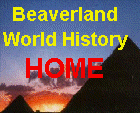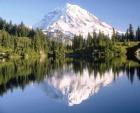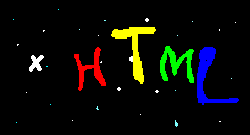

At a Glance
(Ancient World)
At a Glance
(Middle Ages)
Books on eBay ???
Why not!
Click the picture below!
Enter the BOOKS category and
Find fun and bargains!



|
ARTICLES
| |
|
Why don’t you take a break and read these insightful articles !
| |
October 4, 2002 |
How Come Mammoth Went Extinct? (Part 1 of 3) Do you know, Mammoth died while eating a bunch of buttercup? In 1900, a frozen mammoth came to light in Berezovka, East Siberia, which takes its place in the map below. Currently, its reconstructed figure greets you, as shown in the above picture, at the Zoological Museum in St. Petersburg—the second largest city in Russia. When excavated near the Berezovka River, the mammoth appeared at a half-standing position as you can see in the picture. Frozen solid, it turned up in a perfect shape without any defect. To the eyes of scientists, however, the mammoth seemed strange. First of all, it still grabbed a bunch of buttercup in its mouth. Secondly, it appeared to stand up, instead of lying down as usually expected in the dying animals. These findings have ever since troubled the scientists. |
October 4, 2002 |
How Come Mammoth Went Extinct? (Part 2 of 3) Can you eat the 10,000-year-old mammoth steak? Have you ever tasted a piece of frozen meat? To keep it edible with a decent taste, the meat must be frozen quickly at a sufficiently low temperature. Otherwise, the meat would be ruined and you could hardly enjoy the taste of it. Much worse, it would harm your health. Therefore, you might say, it must have been extremely cold at the time when the Berezovka mammoth died. If you think so, however, you are wrong. Do you remember that the mammoth grabbed a bunch of buttercup in its mouth? It was found intact in its mouth when the scientists excavated the frozen creature. |
October 4, 2002 |
How Come Mammoth Went Extinct? (Part 3 of 3) Great Natural Disaster In the prehistory or geologic history, five major mass extinctions took place. No two mass extinctions appear to have resulted from the same confluence of events. Each seems relatively unique in the suite of possible causes for mass extinction. Those five extinctions and their characteristics are as follows in the order of occurrence. The extinction of mammoth—our concern—belonged to not one of the five major wipe-outs but the Late Pleistocene extinction of mammalian megafauna. Although, compared with major mass extinctions, the scale of this extinction remained small, it affected large mammals and also birds around the world, but it gave a big blow to North and South America. Around 10,000 years ago, as the Wisconsin ice sheet retreated, a wide variety of large mammals went extinct in North America, including wooly mammoth, mastodon, giant ground sloth, giant beaver, camels, horses (later re-introduced by Spaniards), cheetah, lion, sabertooth cats, and short-faced bear. |
December 12, 2001 |
Why So Many Cities Drowned in the Mediterranean? (Part 1 of 2) Cities under the Mediterranean The Mediterranean stands out because it contains hundreds, if not thousands, of ancient submerged ruins. A few hundred represent the remains of Roman harbors, coastal towns and villages. Some sites reflect all archeological periods of the last 5,000 years, and several sites even go back farther. Why did the ancient people build so many coastal centers? Then how did those cities sink? |
December 12, 2001 |
Why So Many Cities Drowned in the Mediterranean? (Part 2 of 2) Malta—Lost Atlantis ?? The Copper Age temples of Malta represented a golden era of 1,600 years—an evidence of a people with a high degree of culture and engineering skills that stood out in their time. In fact, some people believed that Malta might have been Plato’s Lost Atlantis described as a Utopia with a high civilization, on a large island in the western sea. Malta is not known to have been inundated by the sea since the ice age, it is not in the Atlantic beyond the Gates of Hercules, nor did it rule Lybia and Egypt, but it could have been all that was said of the Lost Atlantis from the viewpoint of its achievements. |
November 12, 2001 |
What Happened During and After the Last Ice Age?
Glaciation is the name given to the buildup of ice on the earth’s surface, and to the effects that such ice has on the underlying landscape. Ice doesn’s just sit there; it moves, and it has a profound effect on the earth over which it moves. Even today, in an interglacial period, the Earth boasts ice caps at each pole, and when we speak of Pleistocene glaciation we refer to the periodic expansion of those ice caps. These expand when the temperature drops because snowfall builds up over much larger areas. At such times, too, the snowcaps of mountain ranges expand to cover large parts of the surrounding landscape, sometimes melding with the expanding polar ice caps and in other places forming huge barriers to human movement. |
October 21, 2001 |
Catastrophe that wiped out the last civilization (Part 1 of 2) Antarctica—the Land of the Last Civilization wiped out before Egypt and Mesopotamia? In some of the most powerful and enduring myths that we have inherited from ancient times, our species seems to have retained a confused but resonant memory of a terrifying global catastrophe. Where do these myths come from? Why, though they drive from unrelated cultures, are their story lines so similar? Why are they laden with common symbolism? And why do they so often share the same stock characters and plots? If they are indeed memories, why are there no historical records of the planetary disaster they seem to refer to? Actually, some records exist. Let’s find them out. |
October 21, 2001 |
Catastrophe that wiped out the last civilization (Part 2 of 2) The Lost Continent Antarctica is by no means a needle in a haystack. It’s a huge landmass, much bigger than the Gulf of Mexico, about seven times larger than Madagascar—indeed roughly the size of the continental USA. Moreover, as seismic surveys have demonstrated, there are major mountain ranges in Antarctica. And as several of the ancient maps seem to prove, unknown prehistoric cartographers, who possessed a scientific understanding of latitude and longitude, depicted these mountain ranges before they disappeared beneath the ice-cap that covers them today. These same ancient maps also show huge river systems flowing down from the mountains, watering the extensive valleys and plains below and running into the surrounding ocean. |
October 10, 2001 |
Thera Eruption
In 1450 BC or 1628 BC? Some scientists claim that the eruption occurred in 1450 BC; others insist that it took place in the autumn of 1628 B.C. Or probably it might have erupted at both times. Although the exact date remains in question, the island of Thera burst open and blew apart. Quake-induced tsunami waves spread outward, and archaeologists tell us that the whole eastern Mediterranean turned into turmoil about this time. On Crete, the heart of Minoan civilization faltered, and soon mainland Greeks took over—probably because of this confusion. On other shores, mass migrations seemed to commerce everywhere at once. Smaller armed bands joined larger armed bands, leaving burned villages and broken pottery behind them, taking what they could carry as they went. |
October 10, 2001 |
Thera’s Changing Topography
Wanna see a series of makeover that Thera has ever undertaken? Thera has erupted many times in the past, but not so dramatic and devastating as the famous Thera Eruption that took place in 1450 BC or 1628 BC. |
October 10, 2001 |
300-meter (990-foot) Quake-induced Waves at Amnisos Far-fetched?? Read on . . . The Japanese word tsunami means “harbor wave”. These phenomena, normally produced by suboceanic earthquakes, are experienced frequently in Japan and throughout the Pacific region. The great Chilean earthquake in 1960, for example, produced a tsunami that pounded Hilo in Hawaii and parts of Japanese coast 16,000 kilometers away. The earthquake stirs up waves that grow extremely long but shallow. On a ship at sea, one would scarcely notice the swell. As it approaches a shoreline and enters shallow water, however, a wave slows down and increases in amplitude. The water piles up as the forward part of the wave slows down. |
October 6, 2001 |
How come we still talk about Atlantis? (Part 1 of 2)
Memories encoded in Chromosomes? In the religious and philosophical records of ancient India, which often contain strangely modern concepts of matter and the universe, we find references to what is called “cosmic consciousness”, meaning the persistent presence of memories of everything that has happened before. |
October 6, 2001 |
How come we still talk about Atlantis? (Part 2 of 2)
Maps of the Ancient Sea Kings Extraordinary discoveries have been made in the study of certain medieval maps, notably by Professor Charles Hapgood (Maps of the Ancient Sea Kings), who has spent many years re-examining these maps in the light of their containing information about the earth presumably unknown at the time the maps were made. Some of these maps have been copied and recopied through the centuries from vanished originals formerly kept in the great library of ancient Alexandria, and demonstrate startlingly accurate knowledge of lands as yet undiscovered (according to history as we have learned it) when the original and even the copies were made, such as the existence of North and South America and Antarctica thousands of years before Columbus. |











